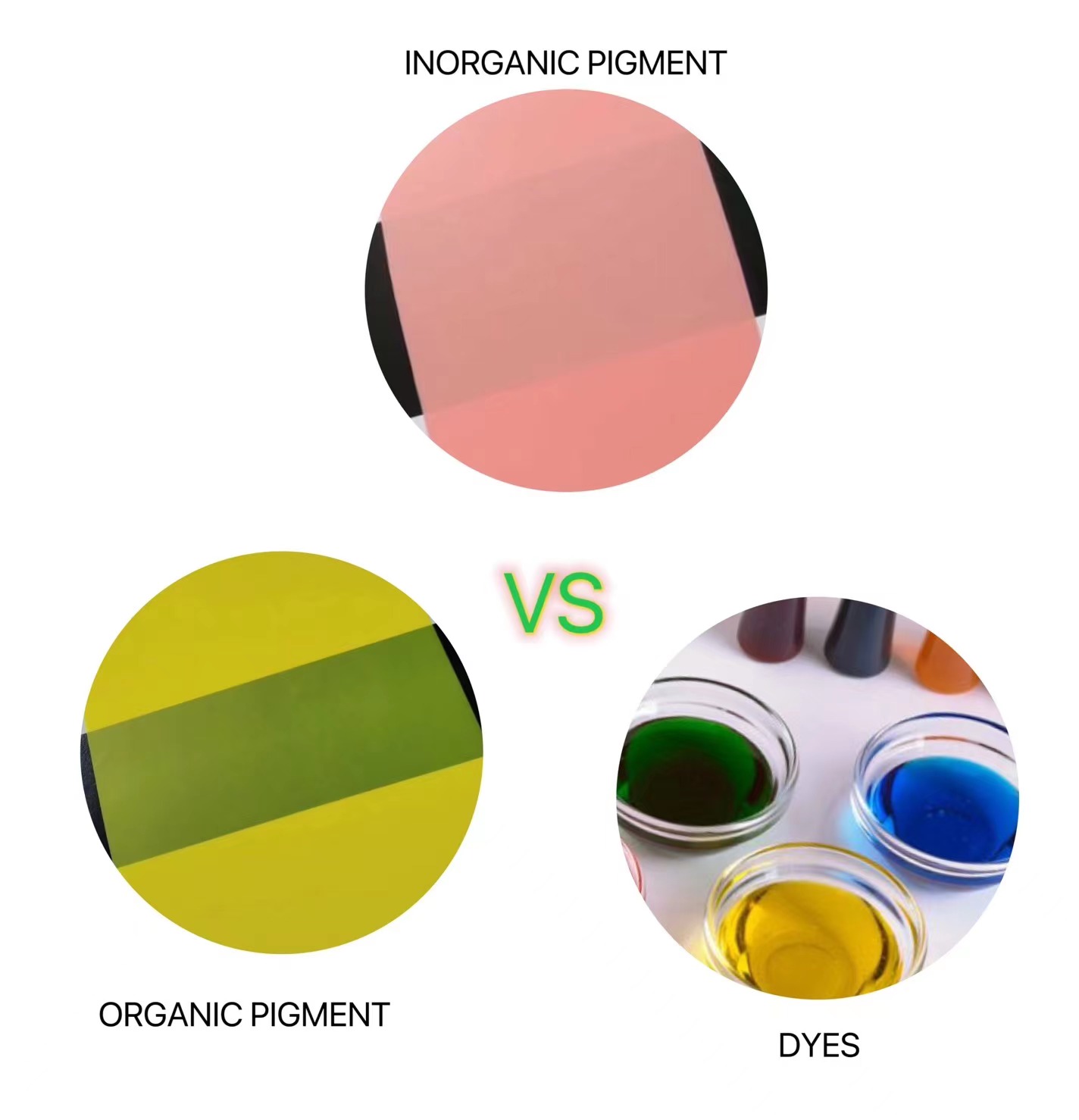
Inorganic pigments are usually salts of metal oxides, sulfides and sulfates, chromates, molybdates, and carbon black. These type of pigments are insoluble in ordinary solvents and plastics, and its thermal and photo stability are better than organic pigments. Within the processing temperature range of plastics, except lead salts, chrome yellow, and cadmium orange, other inorganic pigments are very stable, but their coloring power are inferior than organic pigments. The relative density of inorganic pigments is relatively high, generally from 2.5 to 5.0.

|
ITEMS |
ORGANIC PIGMENT |
INORGANI PIGMENT |
|
|
SOURCE |
NATURAL/SYNTHETIC |
SYNTHETIC |
NATURAL/SYNTHETIC |
|
RELATIVE DENSITY |
2.0~3.5 |
1.2~2.0 |
3.5~5.0 |
|
THE SOLUBILITY IN ORGANIC SOLVENTA ND POLYMES |
SOLUBLE |
INDISSOLVABLE |
INSOLUBLE |
|
TRANSPARENT PLASTIC |
TRANSPARENT |
GERNERALLY NO TRANSPARENT ,A FEW CAN BE SEMI-TRANSPARENT IN LOW CONCENTRATION |
NO TRANSPARENT |
|
COLORING POWDER |
LARGE |
MIDIUM |
LOW |
|
COLOR BRIGHTNESS |
LARGE |
MIDIUM |
LOW |
|
LIGHT STABLILITY |
POOR |
MIDIUM |
STRONG |
|
THERMAL STABILITY |
170~220℃ |
220~260℃ |
500℃ |
|
CHEMICAL STABILITY |
LOW |
MIDIUM |
HIGH |
|
OIL ABSORPTION |
- |
LARGE |
LOW |
|
MIGRATION |
LARGE |
MIDIUM |
LOW |
From above form,In terms of performance, although organic pigments are not as good as inorganic pigments for heat resistance, sun resistance, and covering power, but they have the advantages of low relative density, large oil absorption, bright color, and complete chromatography.higher coloring power,better dispersibility, So Organic pigments are more commonly used in plastics, rubber, inks, colorants, paints, coatings, and other related applications,and inorganic pigments are more widely used in some building materials, enamel, ceramics, glass, outdoor coatings, and so on.